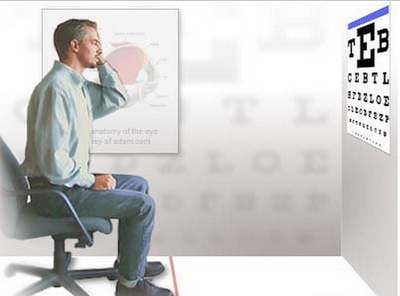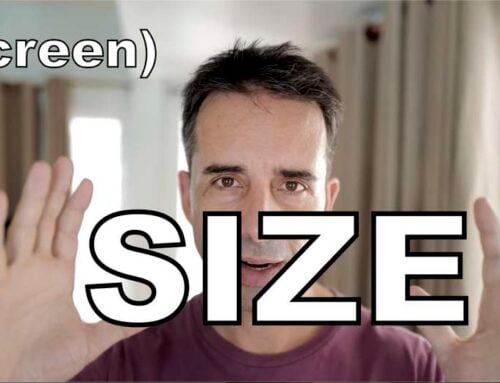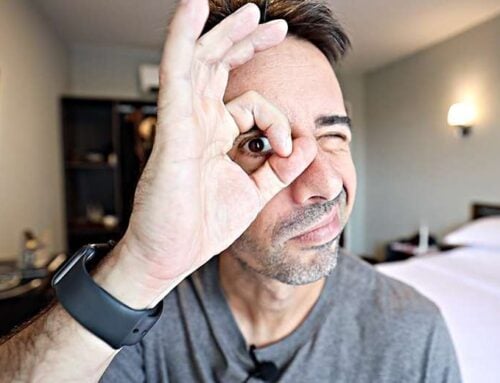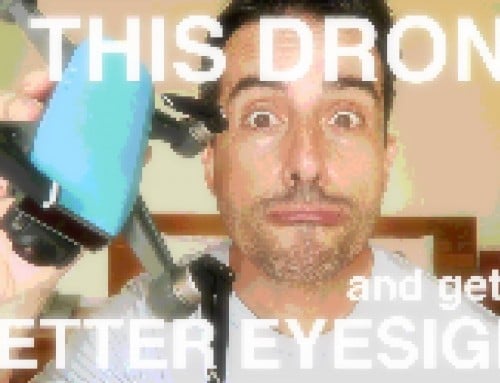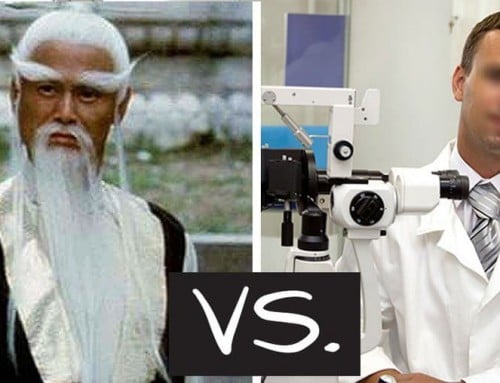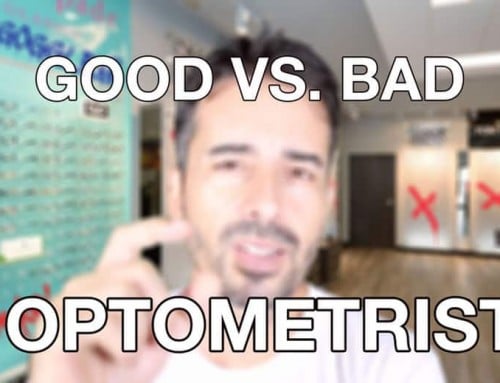Shannon asks in the forum, whether she can wear her old glasses without hurting her eyes.
Old glasses just about always means, a lower prescription. So the question really is, is it bad to wear a lower prescription?
Going to the optometrist is a bit like going to a (legal) and fancy drug dealer. You are buying something to hide a problematic symptom. Something that you need more of since the effects of the first dose aren’t strong enough anymore. Something that will instantly make you see super clearly, and that’ll have some potentially nasty side effects later on (lattice degeneration, retinal detachment, blindness, all things that happen to far more myopes).
The Optometrist Way Will Give You More Myopia.
This is where you want to forget about the optometrist way of “20/20” and the eye chart in the dark room. Forget about those test lenses and staring at the chart through them, trying to determine how high to go before you stop seeing any sharper. That whole premise is based on symptom management, and it has bad long term side effects (you are experiencing them now, with your higher prescription).
Not relevant to your next eight hours in front of a computer.
The way optometrists prescribe lenses is a bit like giving you the highest possible dose of any kind of medicine, that won’t immediately kill you. I am exaggerating, but not by a lot. It is a practice that lacks any sort of nuance or appreciation for your eyes. One day medicine will look back at it and shake their collective heads. Lens prescriptions hopefully one day will be in a museum along with leeches for blood draining and heroin child cough syrup.
You probably already know how your eyes work. A focusing muscle changing the shape of the lens, allowing for clear vision at almost any distance. An infinitely variable focal plane. Glasses can’t do this. They can just make one change of focal plane.
Do you want that change to be as far away from the natural state as possible?
Of course you don’t. Rather than looking at the optometrist way of “see clearly on this eye chart in a dark room”, you want to start thinking of glasses as what they really are: a static focal plane change.
Don’t Overdose On Glasses.
And there is the real question to ask yourself. How much prescription do you really need? When you work on the computer, do you need a prescription that lets you see clearly fifty meters away? Or do you just need 50 or 60 centimeters?
Computer Glasses: Just like not using a chainsaw to cut an onion.
If you are actively working on fixing your eyesight, you know this already. You want both, a clear image, and a horizon of blur at the further end of where you look most. In front of your computer that could be (as example) clear to 50 centimeters, and then a bit of blur at 52 centimeters. Clear vision, a horizon, and then increasing blur.
If you aren’t working on improving your eyesight, you do want glasses that allow you to see clearly. But knowing that lens prescriptions are very, very likely to increase your myopia, you will want to wear just what is actually necessary. For close-up, that will be at least one diopter lower than for distance. And for distance, you should see about 20/30 on the chart. 20/10? Not necessary! It’s likely not even natural for you to see quite that sharp.
Old Glasses? The Short Answer.
Glasses change the focal plane. The more you change it, the more likely your eyes will grow longer and your myopia will increase. So use glasses with caution, and wear only as much correction as you need for the given task.
Take care of your eyes!
– Neha Gupta


